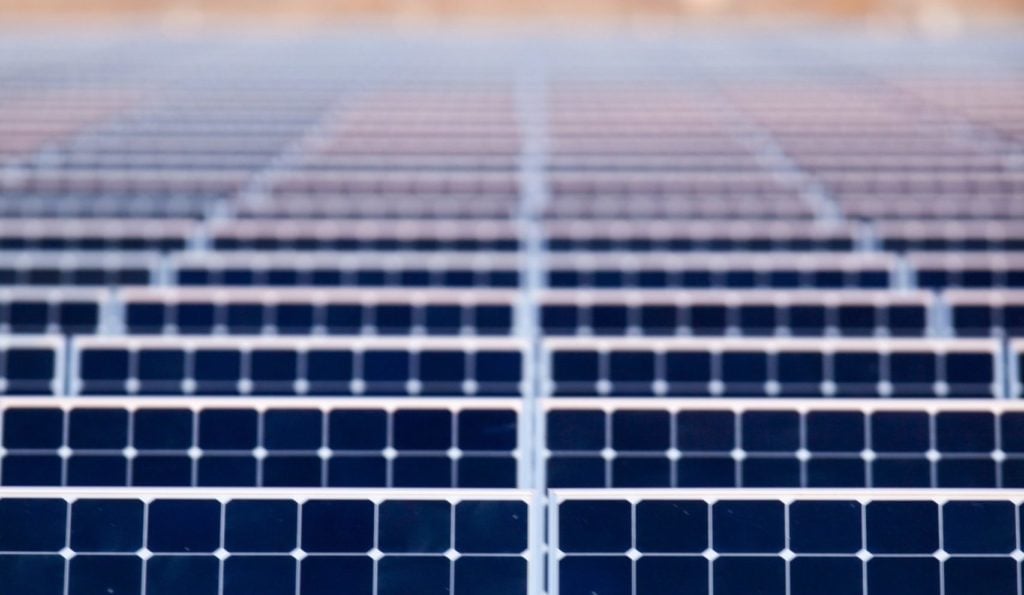
Four Californian Community Choice Aggregators (CCAs) have signed offtake contracts for 393.5MW of solar PV and 171MW (684MWh) of battery energy storage capacity in the state.
The four CCAs—Central Coast Community Energy (3CE), the Clean Power Alliance (CPA), Peninsula Clean Energy (PCE) and Silicon Valley Clean Energy (SVCE)—signed the deals with the project developer and owner, Clearway Energy Group, this week. The deals will stand for 15 years.
Try Premium for just $1
- Full premium access for the first month at only $1
- Converts to an annual rate after 30 days unless cancelled
- Cancel anytime during the trial period
Premium Benefits
- Expert industry analysis and interviews
- Digital access to PV Tech Power journal
- Exclusive event discounts
Or get the full Premium subscription right away
Or continue reading this article for free
CCAs are organisations that aggregate the buying power of local entities and energy consumers in a particular area to secure energy supply contracts that are separate from major energy utilities.
The capacity comes from the Arica solar PV and Victory Pass solar-plus-storage projects in Riverside County, California. The sites have a cumulative nameplate capacity of 463MW of PV and 186MW of energy storage capacity. Clearway Energy has invested heavily in California’s solar and storage sector; the firm secured US$700 million in construction financing earlier this year to support a portfolio of solar and energy storage projects in the state.
In a joint statement, the CCAs said that groups like theirs have contracted 14GW of new, clean capacity in California to date, representing US$25 billion in signed contracts.
Leuwam Tesfai, deputy executive director of the California Public Utilities Commission (CPUC), said: “To achieve California’s clean energy goals, the CPUC ordered load-serving entities like Central Coast Community Energy and Peninsula Clean Energy to bring online over 18,000MW of new, clean resources by 2028.
“Projects such as the Arica and Victory Pass solar and storage project exemplify this work toward California’s ambitious carbon reduction goals.”
CPUC policy changes
The CPUC has proposed and passed a raft of policies in recent months that have reduced the incentives to install small-scale, distributed solar resources, which are often not dictated directly by major energy utilities. The decisions have routinely been met with criticism by solar industry players.
A Proposed Decision (PD) in March to change California’s rules around community solar was called a “significant misstep” by a director of the Coalition for Community Solar Access. The changes in question were proposed by utilities.
More recently, governor Gavin Newsom upheld a CPUC decision to prevent schools and apartment buildings from using power from solar PV built on their properties. A spokesperson from industry association Advanced Energy United said: “California misses a big opportunity to help schools lower their energy costs” by upholding the decision.
In November 2023, the CPUC changed the virtual net energy metering (VNEM) scheme for multi-meter properties, which slashed the compensation paid for the use of solar power generated at the site. Executive director of the California Solar and Storage Association (CALSSA), Bernadette Del Chiaro, said: “The only winners here are big utilities and their shareholders.”
The CPUC and Newsom have provided various reasons for the changes to California’s solar legislation. Newsom said that denying the CPUC’s proposal for schools and apartments “would increase the amount that most customers would pay for their own electric service to provide a rate subsidy to certain customers, and public schools, that install solar PV systems on their property.”
The state is also famous for its “duck curve”, where solar generation in the middle of the day is so high that it pushes power prices to near zero, before spiking again when the sun goes down and power demand peaks. This puts pressure on the grid and the bottom lines of energy utilities and was one of the reasons that the CPUC changed its residential net metering policy last year.






